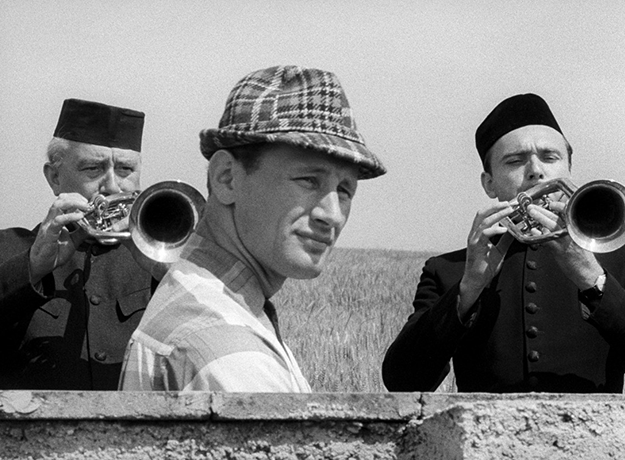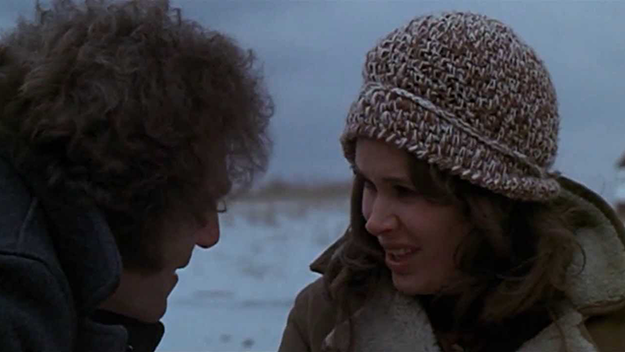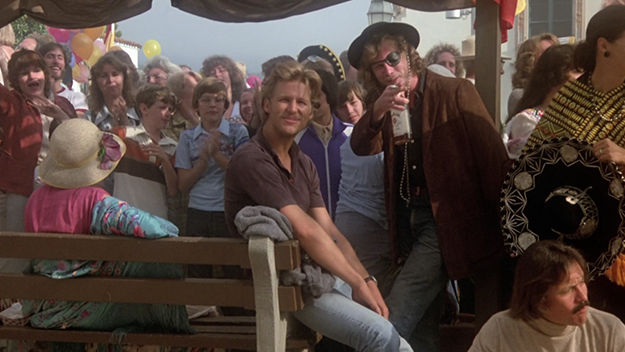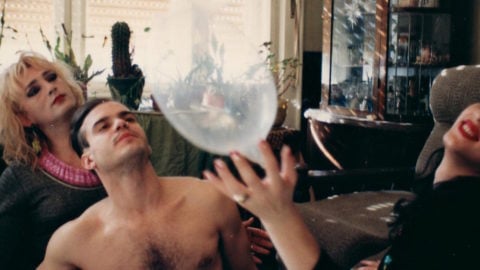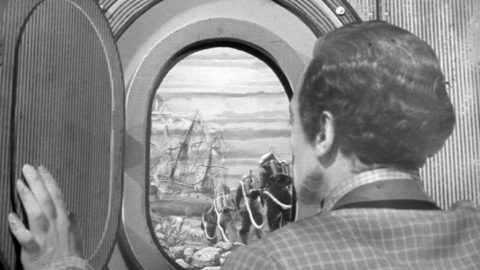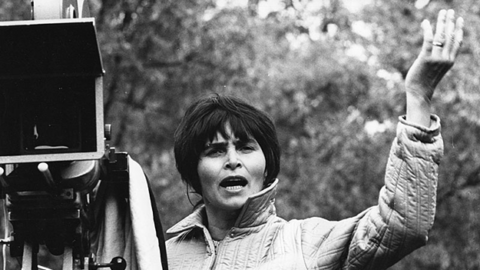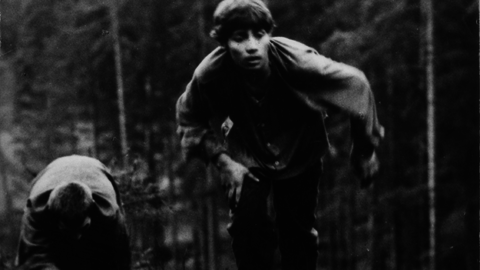Still Free: An Interview with Ivan Passer
To a certain degree, the Karlovy Vary International Film Festival was an ideal place to interview Ivan Passer. The festival, which is held annually in July in the pretty Czech Republic spa town (formerly Karlsbad), was established in its present form in 1965, the same year that Passer’s only Czech feature, Intimate Lighting, was first screened. This year, Passer was invited to Karlovy Vary to introduce the world premiere of the digitally restored Intimate Lighting, undertaken by the leading Czech postproduction house UPP and sound studio Soundsquare.
It was a pleasure to experience on the big screen the newly minted version of this proto-minimalist masterpiece, in which people eat, drink, play music and reminisce. Its gently mocking humor and keen eye for the minutiae of human behavior got me wondering if Jim Jarmusch, whose latest film Paterson I had watched the day before, had been directly or indirectly influenced by it.
Ivan Passer was one of the Czech New Wave directors who emerged in the mid-60s during the short-lived social and cultural democratization in Czechoslovakia that afforded filmmakers unprecedented artistic freedom. With his childhood friend Milos Forman, Passer cowrote Loves of A Blonde (65) and The Firemen’s Ball (67). In that period, Passer, Forman, Vera Chytilova, Jiri Menzel, and Jan Nemec, among others, made films that rejected the official state socialist-realist aesthetic and produced eclectic, highly assured features that captured the world’s attention. After their films were banned, and having fled the Russian tanks in 1968, alongside Forman, Passer, in exile in the U.S., made two masterpieces: Born to Win (71), one of the most sensitive and realistic films about drug addiction; and Cutter’s Way (81), one of the best film noirs of the 1980s.
I met Passer in a lounge of the opulent neo-baroque Grandhotel Pupp, a setting completely at odds with Passer’s relaxed, unassuming, witty personality.
At age 83, Passer, who looks at the world with a certain quizzical smile, is still enthusiastic about movies, despite some setbacks.
Intimate Lighting
What did you think of the new print of Intimate Lighting?
They did a brilliant job. I wish I could have worked with black-and-white more. It’s easier to control the image. It is much more difficult to get the effect you want with color. Incidentally, did you know that there is no blue in Cutter’s Way? Jordan Cronenweth, the wonderful cinematographer, and I decided it would create a better atmosphere. A black-and-white film in color.
I notice that after 48 years in the U.S. you still don’t have an American accent and you haven’t forgotten your Czech.
That’s one of the things I miss most about living in California. I don’t get to speak my own language.
Why have you never returned to your homeland to make a film like your friend and compatriot Milos Forman?
I would have been arrested during the Communist period before the Velvet Revolution in 1989. They allowed Milos to make Amadeus in Prague in 1984 because he was more internationally famous than me. However, a few years ago, I tried to set up a film of the Masin brothers, Josef and Ctirad, known for their armed resistance against the Communist regime in Czechoslovakia in the 1950s, but there was reaction against it in the Czech Republic, because a policeman was killed during the brothers’ raid on a police station.
It seems inconceivable that Intimate Lighting, an almost plotless comedy about the everyday pleasures of life, should have been banned for 20 years. Can you explain it?
I believe that the Party was worried when they saw ordinary people, with all their weaknesses and strengths, depicted on screen. I think they also preferred to be attacked directly rather than to be ignored completely. Before the clampdown, Milos and I got together to discuss how in this godforsaken country we could make good movies. We took a piece of paper and we wrote down several points like “it should be a comedy,” because the Communist Party and the censorship were more tolerant with comedies. “It should be shot outside of the studio, in the streets,” because they would not look over our shoulder that much. “We will use non actors” and “We will use natural light.” My first film, using these precepts, was a 20-minute short, A Boring Afternoon (64), about all the things that happen when, ostensibly, nothing is happening. Miroslav Ondricek, who shot it, was a soccer fan. He believed that his filming a number of matches made him more able to work with non-actors who could not be expected to hit their marks for lighting. When casting Intimate Lighting, which was about a group of friends who play music together, I had to decide whether to have actors pretending to play instruments, or musicians who I could get to act. I settled for non-actors. We were at a music school, and I literally grabbed the principal in the corridor and asked him if he would play the lead role of the cellist. At first he didn’t want to do it, but after he read the script, he said, “It’s about me.”
Born to Win
How did Born to Win, your first American film, come about?
I didn’t think I could ever make films in the U.S. My English was poor. After a couple of years trying to survive in New York, I met theater director and writer David Milton at a birthday party. He invited me to his off-off Broadway play. There were only four people in the audience. Afterwards, we had a beer and discussed writing a screenplay. Three months later we had a script. Not thinking it would come to anything, I said I would direct it. Some months later I had forgotten about it, when United Artists bought it for George Segal, who owed them a few films on his contract. I didn’t know anything about drugs, so I learned a lot of new things, did research. It interested me because here in the country of freedom—for me who came from a country of restricted freedoms—there are these people who voluntary give their freedom away, and are enslaved by drugs. That fascinated me. Anyway, I thought to myself, it’s easy to make films in the U.S. Later I found out the opposite was true.
Did you have problems with producers?
Not really. Remember that I had lived under a Stalinist regime, so I knew how to deal with little Stalins in America. I generally got what I wanted. I tried to stick to my own team as much as possible. I often got my own way in casting. For example, I gave Robert De Niro and Burt Young their first breaks in Born to Win. For Cutter’s Way, United Artists wanted Richard Dreyfuss to play the horribly crippled Vietnam vet Cutter. I thought they were wrong. Anyway, I went to see Dreyfuss in Othello in Shakespeare in the Park. The noisy audience was not paying much attention, lying on the grass making love and smoking drugs. Suddenly an actor came on stage and quietened the audience with his voice. It was John Heard as Cassio. I managed to convince UA that he was right for the role. We were also lucky to get Jeff Bridges, who had just come off the long shoot of Heaven’s Gate.
Which of your films are you proudest of?
I don’t have a favorite. I like Born to Win, but I think its blend of European and American sensibilities disoriented many critics at the time. It’s now considered one of my best films. Maybe Cutter’s Way, which is perhaps my most American film. It is a damaging account of a nation that has lost its final illusions in the Vietnam War and of a society eaten away by corruption.
Any films you regret making?
Not really. Although I made a mistake in the ending of Law and Disorder (74), my second U.S. film, with Carroll O’Connor and Ernest Borgnine as vigilantes. It suffered from a sudden shift of tone towards the end. The audience was laughing all the time, and suddenly this guy was killed and the audience was stunned. I learned that you should never do that.
Cutter’s Way
The last film credited to you was in 2004, Nomad: The Warrior, an epic set in 18th-century Kazakhstan. You’re given a co-director credit. What happened on that?
It was shot on location in Kazakhstan in English. We kept getting instructions from on high, which I imagined came from the authoritarian regime. The government had invested $40 million in the production, making it the most expensive Kazakh film ever made. They wanted the film made for prestige reasons, but on their own terms. For example, I found a beautiful 18-year-old Kazakh girl for the leading female role. However, a message came to me that she was not suitable because she had “no breasts.” Apparently, Kazakh warrior women had large breasts, sometimes cutting one off to make it easier to carry rifles. Unfortunately, due to financial and weather problems the film shut down halfway through. It was then bought by Bob and Harvey Weinstein, who replaced me with Sergei Bodrov, and released it the following year. Bodrov very kindly said that he had taken the job to protect the work I had already done.
Why haven’t you made a film since?
I refuse to do violent films. I consider it dangerous. I have seen real violence during World War II. Violence affects some people who are not able to realize the difference between reality and fantasy. So I take myself out of 80 percent of the American market. I got offers all the time and rejected them. I don’t want to see these movies, so how could I make them? I also have no desire to shoot on digital.
Have you any projects in the pipeline?
I’ve had a few meetings with Dustin Hoffman on a project called Viagra Falls. There are others, but I think that money plays a much bigger role than ever before, mainly in choosing innovative scripts.



